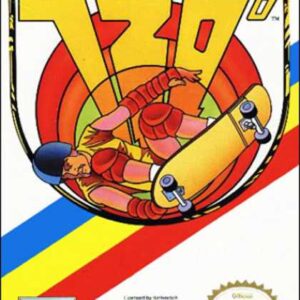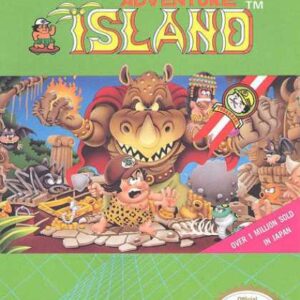
Super Mario is a platform game series created by Nintendo starring their mascot, Mario. Alternatively called the Super Mario Bros. series or simply the Mario series, it is the central series of the greater Mario franchise. At least one Super Mario game has been released for every major Nintendo video game console. There are more than 20 games in the series.
Browse NES Games
Here is our list of Super Mario games ranked. Enjoy!
1. Super Mario World
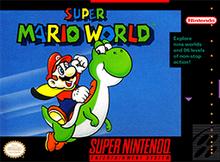
Super Mario World[a] is a 1990 platform game developed by Nintendo for the Super Nintendo Entertainment System (SNES). The story follows Mario's quest to save Princess Toadstool and Dinosaur Land from the series' antagonist Bowser and his minions, the Koopalings. The gameplay is similar to that of earlier Super Mario games: players control Mario or his brother Luigi through a series of levels in which the goal is to reach the goalpost at the end. Super Mario World introduced Yoshi, a dinosaur who can eat enemies, as well as gain abilities by eating the shells of Koopa Troopas.
2. Super Mario Bros.
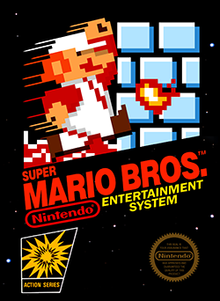
Super Mario Bros.[b] is a platform game developed and published by Nintendo for the Nintendo Entertainment System. The successor to the 1983 arcade game Mario Bros. and the first game in the Super Mario series, it was released in 1985 for the Famicom in Japan. Following a limited US release for the Nintendo Entertainment System (NES), it was ported to international arcades for the Nintendo Vs. System in early 1986. The NES version received a wide release in North America that year and in PAL regions in 1987.
3. Super Mario Bros. 3
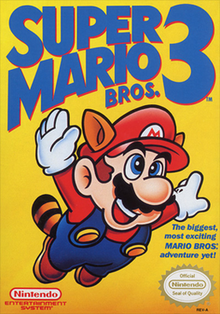
Super Mario Bros. 3[a] is a platform game developed and published by Nintendo for the Nintendo Entertainment System (NES). It was released for home consoles in Japan on October 23, 1988, in North America on February 12, 1990 and in Europe on August 29, 1991. It was developed by Nintendo Entertainment Analysis and Development, led by Shigeru Miyamoto and Takashi Tezuka.
4. Super Mario 64
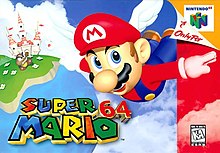
Super Mario 64[a] is a 1996 platform game for the Nintendo 64. Developed by Nintendo Entertainment Analysis and Development and published by Nintendo, it is the first Super Mario game to feature 3D gameplay, combining traditional Super Mario gameplay, visual style, and characters in a large open world. Bowser, one of the main antagonists of the Super Mario franchise, invades Princess Peach's castle and hides the castle's sources of protection, Power Stars, in many different worlds behind magical paintings. As Mario, the player collects Power Stars to unlock enough of Princess Peach's castle to get to Bowser and rescue Princess Peach.
5. Super Mario Galaxy
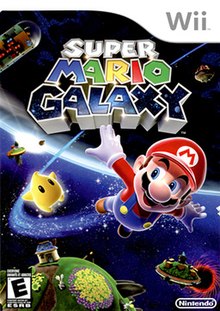
Super Mario Galaxy[b] is a 2007 platform game developed and published by Nintendo for the Wii. It is the third 3D game in the Super Mario series. As Mario, the player embarks on a quest to rescue Princess Peach, save the universe from Bowser, and collect 120 Power Stars, after which the player can play the game as Luigi for a harder experience. The levels consist of galaxies filled with minor planets and worlds, with different variations of gravity, the central element of gameplay. The player character is controlled using the Wii Remote and Nunchuk and completes missions, fights bosses, and reaches certain areas to collect Power Stars. Certain levels use the motion-based Wii Remote functions.
6. Super Mario Odyssey
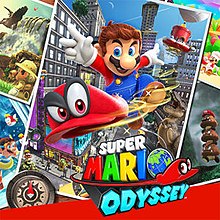
Super Mario Odyssey[b] is a 2017 action-adventure platform game developed and published by Nintendo for the Nintendo Switch video game console. An entry in the Super Mario series, it follows Mario and his new ally Cappy—a sentient hat that allows Mario to control other characters and objects—as they journey across various kingdoms to save Princess Peach from his nemesis Bowser's plans of forced marriage. In contrast to the linear gameplay of prior entries, the game returns to the primarily open-ended, 3D platform gameplay featured in Super Mario 64 and Super Mario Sunshine. Odyssey was released on October 27, 2017.
7. Super Mario Bros. 2
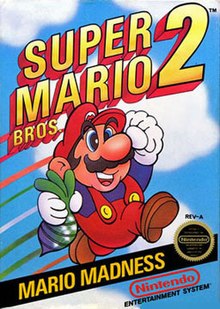
Super Mario Bros. 2 is a platform video game developed and published by Nintendo for the Nintendo Entertainment System. It was first released in North America in October 1988, and in the PAL region in 1989.
8. Super Mario Land
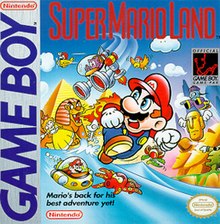
Super Mario Land[a] is a 1989 side-scrolling platform video game developed and published by Nintendo as a launch game for its Game Boy handheld game console. It is the first Mario platform game to have been released for a handheld console. In gameplay similar to that of the 1985 Super Mario Bros., but resized for the smaller device's screen, the player advances Mario to the end of 12 levels by moving to the right and jumping across platforms to avoid enemies and pitfalls. Unlike the other Mario games, Super Mario Land is set in Sarasaland, a new environment depicted in line art, and Mario pursues the debuting Princess Daisy. The game has two Gradius-style shooter levels.
9. Super Mario Sunshine
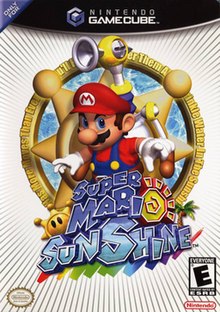
Super Mario Sunshine[a] is a 2002 platform game developed and published by Nintendo for the GameCube. It is the second 3D game in the Super Mario series, following Super Mario 64 (1996). The game was directed by Yoshiaki Koizumi and Kenta Usui, produced by series creators Shigeru Miyamoto and Takashi Tezuka, written by Makoto Wada, and scored by Koji Kondo and Shinobu Tanaka.
10. New Super Mario Bros. Wii

New Super Mario Bros. Wii[b] is a 2.5D side-scrolling platform video game developed by Nintendo EAD and published by Nintendo for the Wii. A follow-up to New Super Mario Bros., it was first released in Australia, North America, and Europe in November 2009, followed by Japan a month later. A high-definition port for the Nvidia Shield TV was released in China in December 2017.[5] Like other side-scrolling Super Mario games, the player controls Mario as he travels eight worlds and fights Bowser's henchmen to rescue Princess Peach. New Super Mario Bros. Wii was the first Super Mario game to feature simultaneous cooperative multiplayer gameplay; up to four people can play in cooperative and competitive multiplayer modes, taking control of Mario as well as Luigi and one of two multicolored Toads. The game also introduces "Super Guide", which allows the player to watch a computer-controlled character complete a level.
11. New Super Mario Bros.

| Single-player, multiplayer |
New Super Mario Bros.[a] is a platform video game in the New Super Mario Bros. series developed by Nintendo for the Nintendo DS. It was first released in May 2006 in North America and Japan and in PAL regions the following month. It is a part of the New Super Mario Bros. subseries of the Super Mario franchise, and follows Mario as he fights his way through Bowser's henchmen to rescue Princess Peach. Mario has access to several power-ups that help him complete his quest, including the Super Mushroom, the Fire Flower, and the Super Star, each giving him unique abilities. While traveling through eight worlds with a total of 80 levels, Mario must defeat Bowser Jr. and Bowser before saving Princess Peach.
12. Super Mario Galaxy 2

Super Mario Galaxy 2[a] is a 2010 platform video game developed and published by Nintendo for the Wii. It was first announced at E3 2009 and is the sequel to 2007's Super Mario Galaxy. It was released worldwide in 2010. The story follows Mario as he pursues the Koopa King, Bowser, into outer space, where he has imprisoned Princess Peach and taken control of the universe using Power Stars and Grand Stars. Mario must travel across various galaxies to recover the Power Stars in order to travel to the center of the universe and rescue Princess Peach.
13. New Super Marios Bros. U

New Super Mario Bros. U[a] is a 2D side-scrolling platform video game developed and published in 2012 by Nintendo as a launch game for the Wii U. It is the fourth entry in the New Super Mario Bros. series. It is a sequel to New Super Mario Bros. Wii (2009) and a follow-up to New Super Mario Bros. 2 (2012). As part of the "Year of Luigi" campaign, a downloadable expansion to the game, New Super Luigi U, was released in June 2013. A standalone retail version was released the following month and later copies of the base game included the expansion on disc. This is the first Mario game to be released in high-definition graphics.
14. Super Mario Bros. Wonder
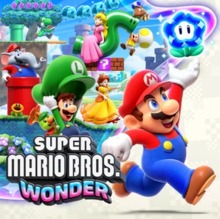
Super Mario Bros. Wonder is a 2023 platform game developed and published by Nintendo for the Nintendo Switch. It is the first traditional side-scrolling Super Mario game since New Super Mario Bros. U (2012). The player controls Mario, Luigi, and their friends as they attempt to stop Bowser, who plots to take over a new land known as the Flower Kingdom after using the magical Wonder Flower to fuse himself with the kingdom's castle.
15. Bowser's Fury
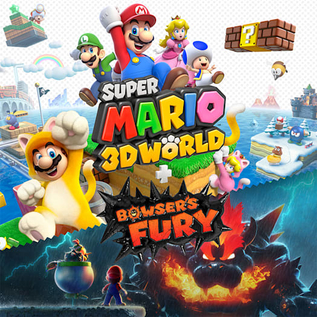
Bowser's Fury[b] is a 2021 platform game bundled in with the Nintendo Switch release of Super Mario 3D World, titled Super Mario 3D World + Bowser's Fury. The player controls Mario through Lake Lapcat to complete challenges and collect items to dispel a black sludge that is infecting the land and free Bowser from its control. Bowser's Fury's gameplay is based on 3D World.
16. Super Mario 3D Land
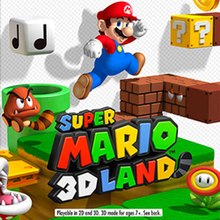
Super Mario 3D Land[a] is a platform video game in the Super Mario series developed and published by Nintendo for their Nintendo 3DS handheld game console. It was released worldwide in November 2011, beginning in Japan. It was the first Mario game to be released for the 3DS.
17. Super Mario Maker
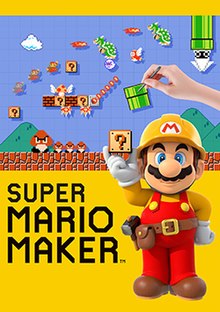
Super Mario Maker[a] is a 2015 side-scrolling platform game and game creation system developed and published by Nintendo for the Wii U, releasing worldwide in September 2015. Players are able to create and play their own custom courses, based on Super Mario Bros., Super Mario Bros. 3, Super Mario World and New Super Mario Bros. U, share them online, and download and play courses designed by other players.
18. Super Mario 3d World

Super Mario 3D World[b] is a platform game developed and published by Nintendo for the Wii U in 2013. It is the sixth original 3D platform game in the Super Mario series and the sequel to Super Mario 3D Land (2011) for the Nintendo 3DS.
19. New Super Mario Bros. 2
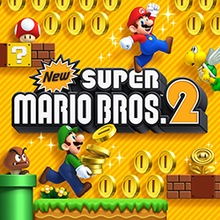
New Super Mario Bros. 2[a] is a 2D side-scrolling platform video game in the New Super Mario Bros. series developed by Nintendo EAD Group No. 4 and published by Nintendo for its Nintendo 3DS handheld video game console and was released on July 28, 2012. It is the third game in the series and is a direct sequel to the 2006 Nintendo DS game New Super Mario Bros. and a follow-up to the 2009 Wii game New Super Mario Bros. Wii (which is a follow-up to the DS game). It is the first Nintendo-published game to be released simultaneously in both downloadable and physical forms.
20. Super Mario Maker 2

Super Mario Maker 2[a] is a 2019 side-scrolling platform game and level creation system developed and published by Nintendo for the Nintendo Switch. It is the sequel to Super Mario Maker and was released worldwide on June 28, 2019. The gameplay is largely retained from that of its predecessor, in which players create their own custom courses using assets from various games across the Super Mario franchise and share them online. Super Mario Maker 2 introduces new features and course assets, including a single player story mode and new level assets based on Super Mario 3D World.
21. Super Mario World 2: Yoshi's Island

Super Mario World 2: Yoshi's Island[a] is a 1995 platform game developed and published by Nintendo for the Super Nintendo Entertainment System (SNES). The player controls Yoshi, a friendly dinosaur, on a quest to reunite baby Mario with his brother Luigi, who has been kidnapped by Kamek. As a Super Mario series platformer, Yoshi runs and jumps to reach the end of the level while solving puzzles and collecting items with Mario's help. The game has a hand-drawn aesthetic and was the first in the franchise to have Yoshi as its main character, where it introduces his signature flutter jump and egg spawning abilities.
22. Super Mario Land 2: 6 Golden Coins
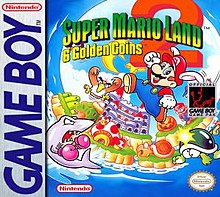
Super Mario Land 2: 6 Golden Coins[a] is a 1992 platform video game developed and published by Nintendo for the Game Boy. It is the sequel to Super Mario Land. In Super Mario Land 2, the player assumes the role of the protagonist Mario, whose main objective is to reclaim his personal island, Mario Land, from the clutches of his greedy rival Wario.[1] The gameplay builds and expands on that of its precursor with innovations carried over from Super Mario World.


